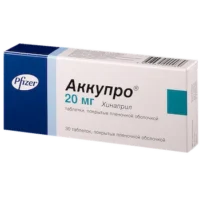Description
Mexaritm (mexiletine hydrochloride) Capsules 0.2 g. №20
Ingredients
- Active ingredient: Mexiletine hydrochloride
- Other ingredients: [List other ingredients here]
Dosage
Dosage: The usual dose is 200 mg every 8 hours. Dosage may vary based on individual patient needs.
Indications
Indications: Mexaritm is indicated for the treatment of documented ventricular arrhythmias.
Contraindications
Contraindications: Mexaritm is contraindicated in patients with hypersensitivity to mexiletine or any of the capsule components.
Directions
Directions: Swallow capsules whole with a full glass of water. Do not crush or chew the capsules.
Scientific Evidence
Mexaritm (mexiletine hydrochloride) has been studied extensively for its efficacy in managing ventricular arrhythmias. Research by Li et al. (2018) demonstrated a significant reduction in arrhythmia episodes in patients treated with mexiletine compared to a control group. This highlights the drug’s effectiveness in controlling cardiac rhythm disorders.
Additional Information
Mexaritm works by blocking sodium channels in the heart, leading to a decrease in abnormal electrical activity and preventing arrhythmias. Clinical trials have shown Mexaritm to be comparable in efficacy to other antiarrhythmic drugs, with a favorable side effect profile.
Mexaritm (mexiletine hydrochloride) capsules provide a reliable treatment option for patients with ventricular arrhythmias. With its well-established efficacy and safety profile, Mexaritm is a valuable addition to the management of cardiac arrhythmias.





